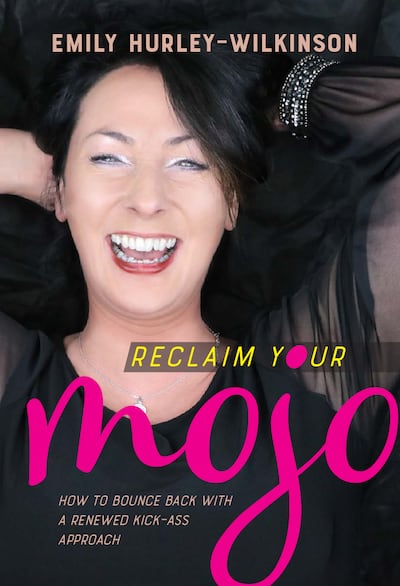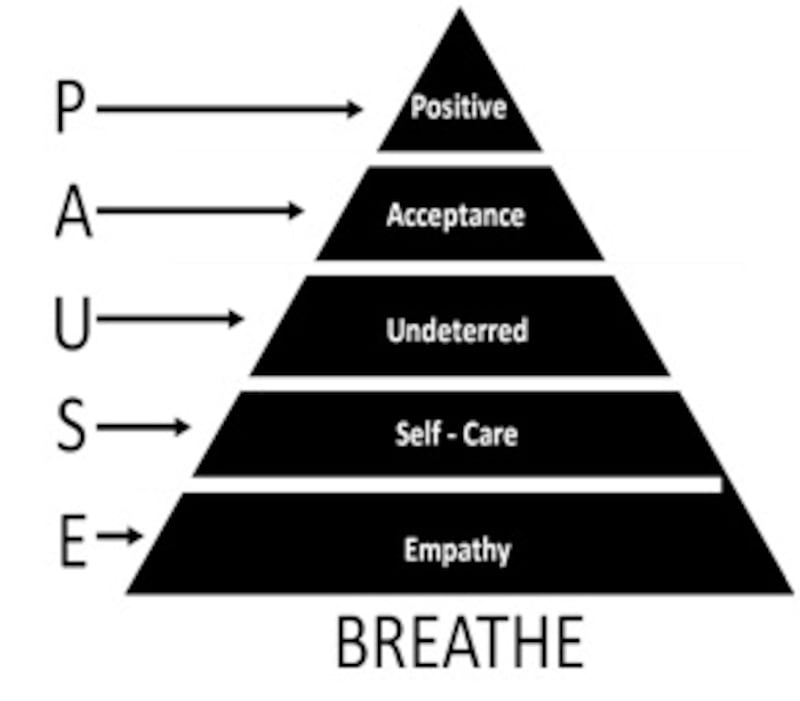“Is this it? Is this me? I look in the mirror and barely notice the person staring back. A tired and disillusioned face etched with mistakes, regrets and a sinking feeling that it might be too late to claw back lost dreams and hopes. Life used to be simple and I felt alive; now my life feels like one big fat groundhog day.”
This is by far one of the most frequent stories that I hear from all kinds of people who have come to me for coaching – and I get it. As a working mum of two boys with a list of priorities, endless demands and challenging experiences competing for my time and energy, I know that feeling all too well.

I'm Emily, author of Reclaim Your Mojo and an accredited personal coach. Throughout the years I have engaged with organisations, health care providers and individuals to help people facilitate change within their lives. Life can be tough: it's demanding, disappointing, routine-based and offers one certainty – change and challenge. Yet, it would seem that many people are not well-equipped to handle these varying experiences. Anxiety and stress-related illnesses are on the rise, leaving many feeling powerless and in serious search of their mojo.
I am no stranger to adversity and know first-hand that sinking feeling of powerlessness and being emotionally overwhelmed. That said, I have navigated my way through many testing times and have bounced back even stronger. I have had the pleasure of sharing these core life skills through my coaching practice and since putting pen to paper, I now share these key skills in my book, Reclaim Your Mojo.
To reclaim your mojo is to regain your sense of personal power and reignite a lust for living. A vital part of being able to minimise the impact of stress, anxiety and negative experiences is through the development of emotional resilience. I thought about the process by which I would guide people how to do this, which led to much research in a variety of disciplines, scientific research and books.
What emerged was that people who are resilient often share a combination of core traits that work together synergistically. In other words, these particular characteristics accomplish more when they are utilised together than they could alone. I also wanted to include a tool that could be accessed anytime, anywhere particularly during emotionally fragile times. With so many tools out there for living better, my focus is on guiding you through a system that is practical and easy to remember, which is why I chose to wrap these core characteristics around an acronym called “System Pause”.

Divided into two stages, the first stage, “Pause for Breath”, guides you through a breathing technique that effectively operates like a mental braking system. It helps to induce a state of calm during times of high stress and anxiety.
Stage two, “Pause for Resilience”, homes in on five core characteristics, and draws out in detail, the why and how to of each characteristic, so that you get to understand and learn ways to mitigate the negative impact of stressful events, whilst protecting your emotional and physical wellbeing.
Pause is an incredibly powerful word, as it simply means to STOP. When we stop “doing”, we usually just breathe, take a mental step back and regain perspective. By learning how to breathe correctly, you create a mental braking system which allows you to not only slow down and gain fresh perspective, but also to regain control during stressful times.
Controlled breathing
Think about the last time you got hot under the collar, stressed or anxious. Did you notice how you were breathing? It is likely that unless you were experiencing a panic attack, you were not aware of your breath. Most of the time our breathing is done involuntarily, but what people fail to realise is that our breath is dual controlled. In other words, our breathing happens both consciously and unconsciously, it is not just an involuntary process. Think about it, if you choose so now, you can hold your breath, slow your breath or speed it up. You can draw your breath through your nose or mouth. The crucial point here is this, you do have control. Yet during heated moments or in times of stress, feeling in control may seem impossible.
Breathing techniques have always been fundamental to the practices of meditation and yoga. The mechanics behind this all natural practice is simple, and the only equipment needed is your lungs. It involves triggering the relaxation branch of the brain through controlled breathing. Usually this is done by inhaling slowly through the nose for a few seconds, noticing that the belly inflates, holding the breath for a few seconds and exhaling slowly and completely through the mouth for a count longer than inhaled. Many experts suggest a breathing pattern of 4:7:8. That means inhale on the count of four, hold for the count of seven and exhale for the count of eight. By intentionally changing your breath as described in this section, you will regain an immediate sense of control, which will also bring immediate benefits even if you have not perfected it.
A great way to see correct breathing in action is to notice how a young relaxed child breathes. You will notice that their belly inflates with each breath in and deflates with each out breath. Little movement will be noticed in the upper chest area. Yet, chest breathing has become the norm for so many people. Is it then any wonder that people complain frequently of feelings of fatigue, anxiety and stress?
The way we breathe is vital to our health and wellbeing, and if correct breathing is practiced daily, the side effects are profound. Breathing influences our physiology and moods, and by learning to diaphragmatically breathe, you can turn down feelings of anxiety and stress and recalibrate yourself to a calmer state in just a couple of minutes.
This is a modified excerpt from the recently published book Reclaim Your Mojo. reclaimyourmojo.com











